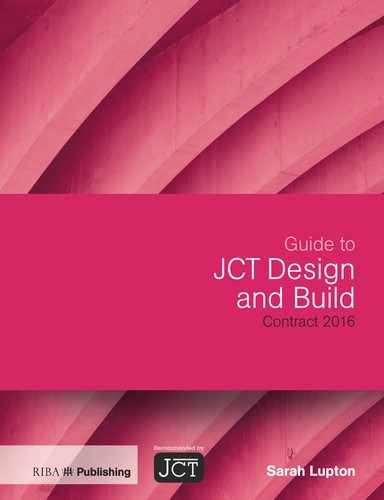About this Guide
Design and build procurement is widely used in the UK, particularly for government-funded and larger projects, but recently there have been signs of it becoming increasingly popular on relatively small projects. The JCT standard form of contract for use with design and build procurement is widely used and is generally considered an industry benchmark.
When first published in 1981 it was a rather awkward adaption of the Standard Building Contract for use with traditional procurement, but later editions have refined the text and layout. The 2016 edition represents a big step forward in this process, whereby drafting has been simplified and rationalised in many areas, including the certification provisions, the stage payments option and the clauses covering action following damage to the works. Other key changes include incorporation of provisions relating to fair payment, the Public Contracts Regulations 2015 and the Freedom of Information Act 2000, modification of Insurance Option C to allow for more flexible solutions to insurance where work is done to existing buildings, the inclusion of performance bonds and parent company guarantees, and tightening up of the arrangements to secure provision of third party rights/warranties from sub-contractors. All of these will ensure that DB16 remains a popular choice for design and build projects.
This Guide is intended primarily for consultants, such as architects, quantity surveyors and project managers, who may be advising either the employer or the contractor. However, it would also be useful for the parties to the contract, and the author has recently come across examples of sub-contractors using it to help guide them where claims and disputes have arisen on design and build projects.
As with the other Guides in the series, this edition examines the form by topic, rather than on a clause-by-clause basis. After a general introduction to the form, which compares it with other JCT contracts, the Guide sets out some basic principles of design liability, with relevant case law and statutes. It then looks at the documents that form the contract package, including the employer’s requirements and the contractor’s proposals, followed by programming issues, control of the works, valuation and payment, insurance, termination and dispute resolution. Extensive use is made of diagrams and tables to further explain the form’s procedures.
The author would like to thank her partner, Manos Stellakis, for his helpful comments and suggestions regarding the implications for consultants working in the context of design and build procurement.
